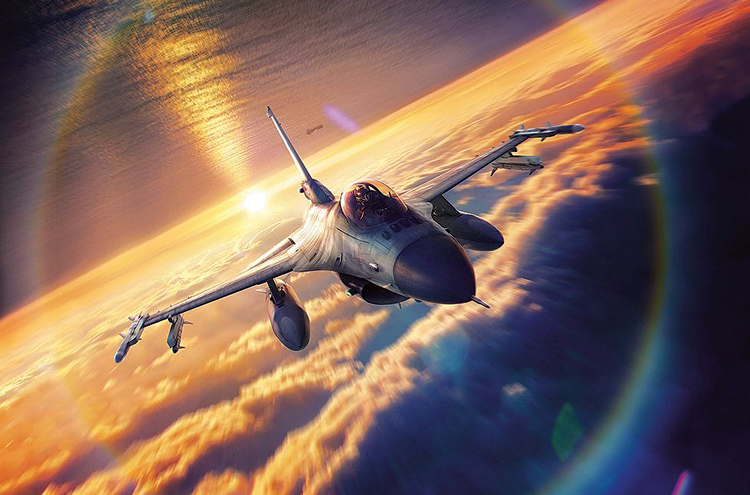INDIAN ARMED FORCES CHIEFS ON
OUR RELENTLESS AND FOCUSED PUBLISHING EFFORTS

SP Guide Publications puts forth a well compiled articulation of issues, pursuits and accomplishments of the Indian Army, over the years

I am confident that SP Guide Publications would continue to inform, inspire and influence.

My compliments to SP Guide Publications for informative and credible reportage on contemporary aerospace issues over the past six decades.
Ready for Full-Fledged War
NEWS:
Addressing a press conference on the occasion of the 85th Anniversary of the Indian Air Force (IAF), Air Chief Marshal B.S. Dhanoa, Chief of the Air Staff (CAS) said that the IAF was fully prepared to fight a full-fledged war at short notice. He added that the IAF was ready with ‘Plan B’ to cope with any threat arising from China and Pakistan simultaneously. The CAS hinted that post Doklam standoff, Chinese forces are still present in the Chumbi Valley. Commenting on air operations across the LOC in J&K, the CAS said that the IAF has the ability to “locate, fix and strike targets across the border.” In conclusion, he said that it would be better for the IAF if the Government expedites the procurement of the single-engine fighter aircraft under the ‘Make in India’ programme.

VIEWS:
Traditionally, the IAF has been overwhelmingly focussed on threat from the Pakistan Air Force (PAF) with the nation having been involved in three major military conflicts since independence, with the hostile Western neighbour. Consequently, the development of infrastructure for the IAF by way of airbases, location of combat squadrons and creation of ground based air defence systems as well as other supporting assets, clearly reflected the nature of threat perception at the national level. In the only major military conflict with the other hostile neighbour China that took place in 1962, for some reason best known to those at the helm of affairs then, the IAF was not employed even to provide close air support to own troops fighting a losing battle against the invading Chinese forces. The justification put forward later that, at that point in time, it was necessary not to involve the IAF in offensive air operations to obviate the possibility of escalation of conflict, remains unconvincing till today. A large scale military conflict with China in which, apart from supporting operations by ground forces, the IAF would have to take on the People’s Liberation Army Air Force (PLAAF) as well, till now, was never considered a real possibility by the Indian establishment.
However, the statement in the recent past emanating from the highest echelons of the IAF clearly indicates that perceptions have changed considerably and that the IAF would have to confront the PAF and the PLAAF individually or in the worst case scenario, both simultaneously if China and Pakistan decide to collaborate in launching military operations against India. This contingency that the IAF may have to deal with, is generally referred to as a “two-front war”. With the rapidly growing economic and military ties between China and Pakistan, the possibility of the nation being confronted with a two-front war is no longer a figment of imagination and ought not to be glossed over.
The PAF currently has 22 squadrons that can field around 465 fighter aircraft against India. Of these, there are 75 Lockheed Martin F-16 Block 52 fourth generation platforms which, given the strained relations with the United States, may suffer from lack of product support from the original equipment manufacturer thus eroding operational potential of the fleet. Bulk of the remaining fleet consists of fighter aircraft of Chinese origin and is a mix of third and fourth generation platforms. It is understood that China is likely to supply fifth generation combat platforms as well in the future which would significantly upgrade the operational capability of the PAF’s combat fleet.
The PLAAF has over 1300 combat aircraft on its inventory consisting of both fighter and bomber aircraft. Out of these, it can currently deploy around 300 fighter and 72 bomber aircraft against India. The limitation in numbers is due to the fact that the PLAAF is dependent on the airfield infrastructure available in Tibet from which air operations against India can be launched. In recent years, China has embarked on a major thrust to upgrade airfield infrastwructure in Tibet to enhance its capability to employ air power against India in the event of a war. The PLAAF has also been conducting air exercises with unfailing regularity along the Sino-Indian border. But the major limitation that the PLAAF has to contend with is the fact that the airfields in Tibet from where operations against India are to be launched, are located at altitudes around 4000 metres above mean sea level. This results is significant reduction in payload. To cater for this limitation, the PLAAF has inducted the IL-78 Midas Flight Refuelling Aircraft from Russia and also has modified the fleet of Tu-16 bomber aircraft as aerial tankers. However, several of the older generation combat aircraft in the PLAAF do not have the capability to receive fuel in flight. This problem will be overcome when the older fleets are replaced with new generation combat platforms. With in-flight refuelling capability, fighter and bomber aircraft of the PLAAF can get airborne with maximum payload; but with low fuel. They can thereafter refuel in flight and engage targets in India at their maximum range.
But what is of critical importance at this point in time for the IAF is not to draw solace from the limitations of the PLAAF, but to restore the operational edge of its own combat fleet which undoubtedly is in a precarious state. Hopefully the newly appointed Minister of Defence will pay heed to the appeal by the CAS to the Government to expedite the process of induction of single-engine combat aircraft under the Make in India programme.





